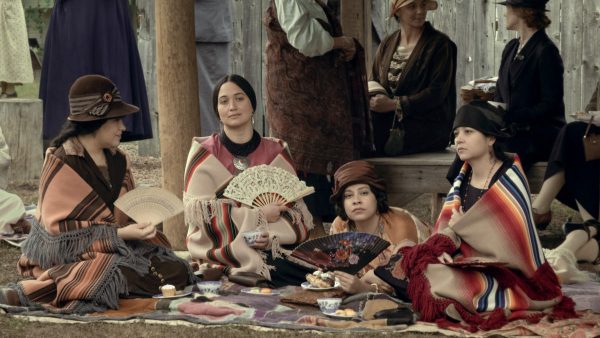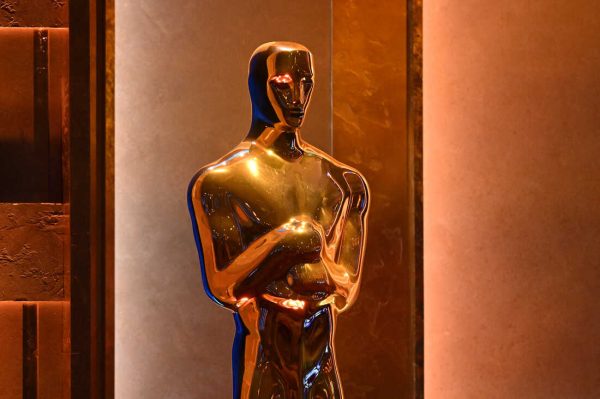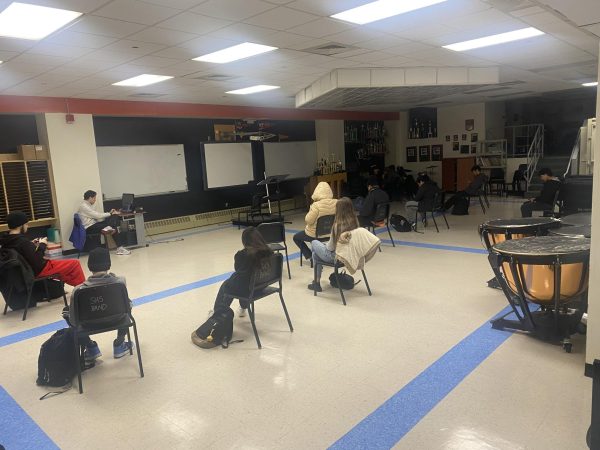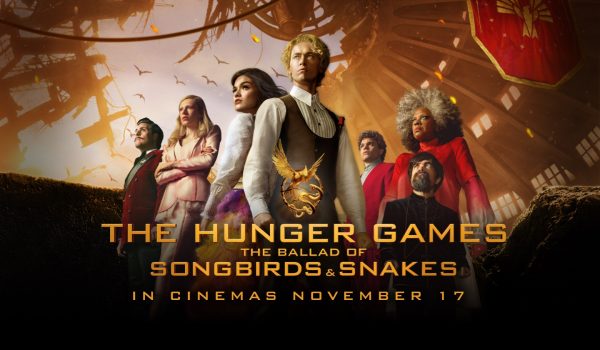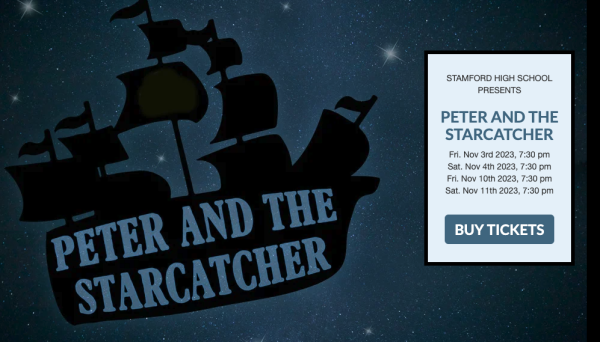My 10 Greatest Movies of All Time
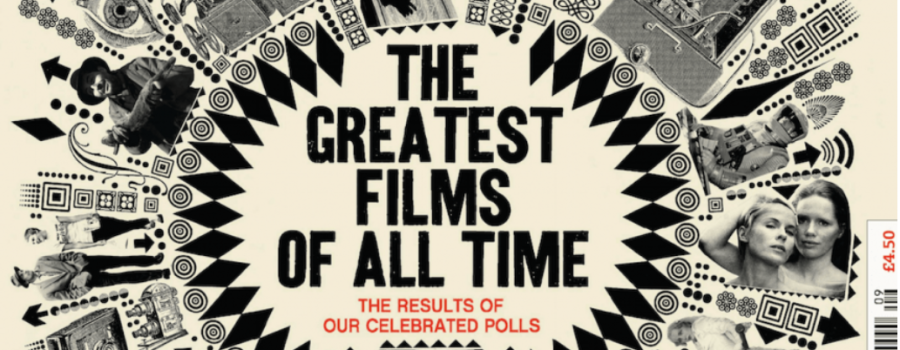
February 2, 2023
Every 10 years the British Film Institute (BFI) asks established critics and directors to list what they think are the 10 greatest films ever, then they compile two separate lists of the films that received the most votes from directors and critics respectively. Recently, the BFI expanded the Critics’ Top 100, which was revealed in December of 2022, to the Top 250 (it can be found here). A problem many people have with the list is that they don’t know the criteria each voter has to consider a film great, so people don’t know how reliable critics’ picks are for their own definition of greatness.
I think a film can be considered great if it excels in one or several of four categories. The first is technical mastery. I consider a film great if most or all of the technical aspects, such as cinematography, editing, sound design, blocking, etc., are executed skillfully. I would say a film that falls under this category is David Lean’s Lawrence of Arabia.
The second is innovation. If the film invented one or more techniques to advance the medium, such as the invention of the iconic dolly zoom in Alfred Hitchcock’s Vertigo, I would call it great. Another example is if it used one or more techniques in a new and creative way to have the same effect on the medium, such as the use of montage editing in Sergei Eisenstein’s Battleship Potemkin, where he uses the technique already theorized by Lev Kuleshov and builds off of it to enhance the pathos in his propaganda film. Technical innovation is the most recognized, but I should mention that there are other ways a film can push the envelope, such as with its storytelling.
The third is real world influence or influence on other filmmakers. The difference between this category and the last is that films in this category don’t necessarily have to be revolutionary. They can use existing techniques in ways that have been done before, but have to do something that sets them apart and make people view the medium or what the film depicts differently. Francis Ford Coppola’s The Godfather is not the first mafia film, nor did it invent or build off of a single technique, and the film has its own influences, such as Luchino Visconti’s The Leopard. This, however, didn’t stop the film from inspiring countless other crime films, such as Martin Scorsese’s Goodfellas, or from changing the way Americans viewed the mafia. The Godfather’s influence is the result of presenting mainstream American audiences with complex characters and plotlines that they likely would not have seen prior to the New Hollywood movement.
The final category is the complexity and importance of themes and commentary on humanity, and how they’re communicated. Most films have multiple themes, but they’re not always very profound, instead being superficial and banal, and can be communicated poorly. Hiroshi Teshigahara’s The Face Of Another is a film that communicates its themes about people’s identity and the relationship between people’s conscience and their bodies cleverly with its story and symbolism.
Having now stated my criteria, I want to share the ballot I would submit if I were to be asked right now by the BFI to submit one. As you read, keep in mind that I am new to cinema and have only seen around 600 films, many of which are not part of any film canon.
La Jetée (Chris Marker)
This film is famous for being composed entirely of still frames. The filmmaking is very imaginative and the still frame concept is executed perfectly with immersive sound design, profound narration, and haunting imagery. Marker could have just relied on a gimmick to try to convince people that his film is great, but instead he used this concept to enhance the film’s incredible story: that of a time traveling man who attempts to save the world after World War III. This story would later inspire Terry Gilliam to make 12 Monkeys, which tells a similar story in a much more conventional way. A creative story is what sets it apart from other, gimmicky films such as Alexander Sokurov’s one-take feature Russian Ark, which mostly feels like a boring museum tour. Another problem with gimmicky films is their lack of themes, as they often only try to show off, but Marker comments mostly on memory and its effect on people’s minds in this film.
A Trip to the Moon (Georges Méliès)
Although probably not the first narrative film ever made, A Trip to the Moon is easily the most influential of all the early works of cinema that were made in the final decade of the 19th century and the first decade of the 20th century. It is considered the first science fiction film, and its use of innovative special effects has influenced the entire medium, not just the science fiction genre. There are no big technical flaws but due to the fact that it was made so long ago it looks very outdated and is only about 14 minutes long, though the story of people going to the moon and getting attacked by aliens probably won’t bore you. What it lacks in themes it more than makes up for with its revolutionary use of the medium.
Mirror (Andrei Tarkovsky)
Being the only director on this list whose filmography I’ve completed (because it’s so short due to his untimely death), I can safely say that Andrei Tarkovsky has never had a single misstep in his career. In a career filled with such important works like Offret and Stalker, I think his greatest achievement is Mirror. To put it simply, it is a poem converted to the medium of film. With poetic narration and striking visuals, this film is a very unique experience that is difficult to interpret, but is transfixing and serene. The serenity is momentarily lost during the war sequences, which quickly turns visceral, but the film then goes right back to it. It’s an experience that’s difficult to describe, and must be felt.
Persona (Ingmar Bergman)
Persona is a very iconic film and has influenced many directors, most notably David Lynch, where the influence is very apparent when viewing his (supposed) masterpiece Mulholland Drive. It is also infamously complex. No one really knows what it all means, but the fact that so many plausible and well articulated interpretations have come from just over 80 minutes of runtime is a testament to how powerful the images are. Even though it is hard to understand, the editing, camerawork and dialogue make it a gripping experience that causes a range of emotions and makes amazing use of the medium. The introduction may be the greatest ever, a rapid-fire series of short clips that leave a lot to think and theorize about.
The Human Condition (Masaki Kobayashi)
This film is not only one of the greatest films I have ever seen, but I also consider it one of the greatest works of art ever created in any medium. It can be argued that it is not one film, but a trilogy, since that’s how it was released. However, I think it was intended to be viewed as one whole film, and that’s what I consider it. In total, it is around 9 hours, 30 minutes long. Even with its daunting length, the film does not at any point drag or bore you, and every single scene feels necessary in building the main character of Kaji. Kaji is one of the greatest characters in all of cinema, and the film does a great job of showing how throughout the war, Kaji’s views on the world around him change, and the way his story ends is sure to floor anyone. Unfortunately, it doesn’t seem to have had much influence on anyone, as it is not very mainstream, but its popularity continues to grow and hopefully it will inspire the next generation of filmmakers. Unsurprisingly, for a film called “The Human Condition,” it is one of the most thematically rich films ever made, commenting on the psychological effects of war, captivity, and authority, and the depravity of human beings. I think it is a film everyone must see at least once.
2001: A Space Odyssey (Stanley Kubrick)
This is a film that I feel checks every box. It has already been said numerous times that everything has already been said about it, and I think that alone shows how influential it is, not to mention its undeniable influence on the entire genre of science fiction. The filmmaking is close to flawless, with some of the best and most innovative special effects of all time that still hold up over 50 years later, and incredible cinematography and sound design. This is another one of the most thematically rich films ever made, commenting heavily on evolution and technical revolution.
Don’t Look Now (Nicolas Roeg)
I wouldn’t consider this film the greatest of all time, but it is one of, if not the only film where I truly can’t find a single technical flaw, and that I would consider perfectly made. Every line of dialogue and jump cut maintains the suspense and creates an unparalleled experience that spans from the very first to the very last frame. It has also had major influence on the horror genre and horror filmmakers, most notably Ari Aster, who called it a major influence on his film Hereditary. It comments on the psychological effects of losing a loved one, specifically a child, and does so very effectively.
The Tree Of Life (Terrence Malick)
Often compared to the previously mentioned 2001: A Space Odyssey, I think that this film is even better. Like 2001, it relies heavily on its imagery and sound to communicate its themes and less on a formal narrative. In those two categories, this film may be unmatched. The cinematography is bar none the greatest I have ever had the pleasure of seeing. Every single shot, without exception, is framed, lit, and blocked perfectly, but still manages to be unique. Each image, whether metaphorical or part of the story, is dreamlike. The sound design is beautiful, hypnotic, and again, dreamlike. The voices of the narrators and the sounds of nature fully immerse you into this film’s ethereal world, which many times is literally not of the Earth. It is another film that, unfortunately, hasn’t had much influence and it also isn’t very innovative, which makes sense due to it having been released so recently (in 2011). It is certainly very complex and difficult to understand, but if you can make anything of the abstract images and the loose story, it may change the way you view the universe and life in general.
Paris is Burning (Jennie Livingston)
Although the backstory is controversial, and possibly problematic, the film itself is a deeply humanistic and succinctly informative documentary. Joyous, but harrowing at the same time, this film depicts the vibrant ballroom scene of 1980’s New York City. Being part of a world that didn’t want them, Hispanic and Black members of the LGBT community formed their own underground ballrooms and organized drag races. A detailed exploration of their subculture is part of what this film offers in only 71 minutes of running time. The amount of information seamlessly delivered in such a short runtime is in large part what makes this such a technical milestone in the documentary genre. It is also very good at portraying what it’s like in a ball, and it feels like you’re really there. The best part is really that it allows marginalized people to talk about their struggles, very similar to Marlon Riggs’ Tongues Untied, but it also lets them celebrate themselves, which I think puts it above the aforementioned documentary. For me, this emphasis on portraying the members of this subculture the way they want to be portrayed overrides any suspicion that this was created to exploit them.
Distant Voices, Still Lives (Terence Davies)
There is no real order to this list because ballots don’t rank their 10 films, but I would consider this to be the greatest film I’ve ever seen. Terence Davies ditches a conventional narrative in order to amplify the emotional and philosophical content, and the result is one of the most transcendent films you’ll ever see. The acting is some of the most realistic ever, and it often feels like you are watching real events unfold. The music enhances the emotional aspects to great effect and the lyrics of the songs often coincide with the on-screen images. The storytelling is very creative, as it is really just a collection of moments in the lives of a family in Liverpool, England. Some are humorous, others are disturbing, and some are very heart wrenching and difficult to watch, just like real life, and that’s ultimately why I would put it at number one. It is the most true to life film I have ever seen, commenting on life as a whole, and it is one that I will revisit again and again. This is my number one recommendation to anyone and everyone who can experience this medium.
In the end, 8 of my picks made it onto the actual list. The highest ranked one is 2001: A Space Odyssey at #6. Some of my picks placed disappointingly low, with Distant Voices, Still Lives at #243, The Tree of Life at #196, and Paris is Burning also at #196 (if films are in the same position, it means they received the same number of votes). The ones which did not make the list were The Human Condition and A Trip to the Moon, which both came as a massive shock to me. Overall, while I have only seen 58% of the Top 250 (which actually consists of 264 films), I would say it’s a very good list for introducing people to more obscure, unconventional and acclaimed films – if you ignore the rankings.




